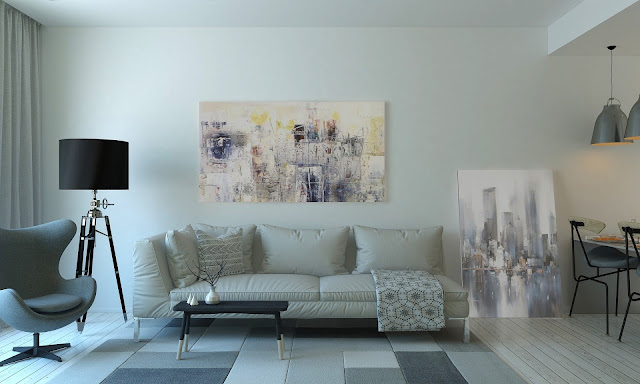Featured
- Get link
- X
- Other Apps
What Does An Interior Designer Actually Do??
Hello Everyone!!!!! Welcome to Archstuff, here I am always write posts about Architecture, about famous buildings and many more. Everyone knows about Architecture and Interior Design, but not everyone knows about what an Architect do? or what an Interior Designer do? So today I will tell you about "What Does An Interior Designer Actually Do"?? But before reading this article make sure that you know something about ARCHITECTURE.
Now many people are confused by this because they think - couldn’t anyone be an interior designer? Well of course many people and actually I would argue most people could have good design sensibilities and creative ideas. But to become an interior designer, it requires much much more than that. Public safety is very very important when it comes to built environments. After all it’s where the majority of us spend our time in homes, offices, schools, shopping centers, bars. Well hopefully not the majority of your time is spent in bars. And while Engineers and Architects are responsible for many important building components their responsibilities don't always cover everything especially interior components such as interior partitions, corridors, CIRCULATION, suspended ceilings, lighting, furniture, fixtures, equipment, and finishes.
Someone needs to make sure all these interior components meet egress, life safety, indoor air quality, and building code requirements, while at the same time being functionally and economically designed. Fire safety is really really important. Most of us know about fire alarm and sprinklers but there are also many other steps taken to ensure our safety in interior spaces that many people don’t see. Walls, ceilings, windows and doors have to be built with the appropriate material and assemblies in order to meet fire separation requirements. Materials such as wood, carpet, textiles and many other things have to meet flammability and fire resistance ratings and designers need to know what ratings apply in what situations. Corridors, aisles and doors have to meet appropriate lengths, widths and clearances that adhere to stringent building codes in order to allow for proper evacuation in the event of a fire.
So unlike structural engineers, interior designers are usually not responsible in designing load-bearing walls or structures, but we still have to be responsible for the material and structural integrity of many things, such as knowing where to put deflection channels and expansion joints in materials, knowing where to put additional support and blocking for wall-mounted or ceiling-mounted fixtures such as lighting, cabinets, and heavy equipment, and where to install additional bracing and support for things like suspended ceilings and demountable partitions in certain seismic zones. When it comes to finishes, interior designers needs to have extensive knowledge in standardized testing of materials and industry requirements, sound absorbency or transmission levels of products in order to meet acoustic needs, coefficients of friction, what they mean, and how to meet flooring slip resistance requirements, and if the materials emits volatile organic compounds or toxic chemicals that could adversely affect indoor air quality.
For instance, to you it may look like the interior designer just picked out a nice looking window covering, but really he or she may also had to consider factors like light control, thermal heat gain/heat loss, privacy needs, acoustic transmission, operability, air circulation, material quality, durability, flammability and fire resistance, while at the same time balancing those factors with the clients budget and personal requirements. Every step of the way, designers also need to ensure that the spaces we build are inclusive to persons with disabilities. Whether it’s planning adequately sized accessible routes, clearances, doorways, and turning circles; installing visual, auditory and tactile signage and alarm systems; and integrating automated systems that can aid the access of people with mobility limitations. These a just a few examples of the types of considerations interior designers have to make.
And after doing all of that, we still have to produce accurate construction drawings, put together contract document and bidding packages so the project can be sent out to be built. Lots of people think design is all about making something look beautiful. Whereas aesthetics is really only just a part of the equation. Good design is about the ability to achieve safety, function, quality, and aesthetic beauty while working in a set of programmatic and budgetary constraints. When I think about all these things it honestly makes me very excited. To know that interior design is such a wholesome, integrated discipline that is the practical application of technical knowledge and creative thinking. It is also an important responsibly to have - to ensure that people can live, work and entertain in spaces that are safe, secure, healthy, comfortable and fulfilling.
Thanks for reading this article. If you have any questions about interior design or if this is a field that you are interested in pursuing and you would like to know more, please let me know in the comments. Thank You!!!!!!!!!
- Get link
- X
- Other Apps
Popular Posts
What is the profit margin for ready mix concrete business in India?
- Get link
- X
- Other Apps



Comments
Post a Comment